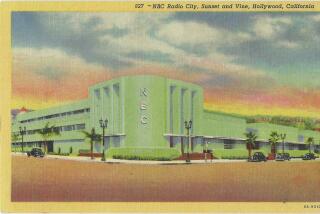Where have all of KUSC’s listeners gone?
Music is the most mathematical art form, but for classical music station KUSC-FM (91.5), the radio world’s arithmetic has turned hostile, spelling nothing but trouble for its ratings.
Arbitron, the company that surveys radio listeners to calculate how many tune in to each station, says KUSC has lost more than half its core audience over the last 20 months. Ratings declined moderately during 2010 and the first half of 2011, then went into a tailspin.
According to Aribtron’s reports, KUSC’s average core audience has sunk from nearly 26,000 listeners in 2009 to 9,500 in its latest report — a 63% fall. Core listeners are people who tune in for at least five minutes during any given 15-minute period between 6 a.m. and midnight.
CRITIC’S PICK: Fall arts preview
KUSC’s president, Brenda Barnes, says that as far as she can tell, the audience hasn’t gone anywhere, not to satellite radio or other musical streams. She thinks Arbitron must be failing to include enough college graduates — the group most likely to listen to classical music radio — among the approximately 3,000 people in Los Angeles and Orange Counties whose listening habits it electronically tracks each month. To Barnes, KUSC’s ratings drop is a sign of an undercount, not a decline in listenership.
But Arbitron stands by its findings. If anything, said spokesman Thom Mocarsky, college graduates are over-represented in its L.A.-area surveys.
Although age is one hallmark of classical radio listenership — an Arbitron study in 2010 found that 51% were ages 65 and older — recent findings by Station Research Group, a service organization for public radio stations, found that being a college graduate is the single most important factor for predicting whether classical music will be part of a person’s radio diet.
“This music has stood the test of time, so it’s unlikely there is suddenly a lack of interest,” said KUSC’s president, answering questions by email recently while vacationing overseas. With one recent exception, KUSC hasn’t changed its on-air personnel, or its programming approach, Barnes noted.
KUSC officials also point to rising donor rolls during a period when ratings were sinking, from mid-2011 to mid-2012. Station officials said the increase from 37,345 donors to 39,620 was evidence that listenership was not in free fall, because if Arbitron’s numbers were accurate, the potential donor pool would have shrunk badly, triggering a decline in gifts the station musters mainly through on-air pledge drives.
Overall, said Eric DeWeese, KUSC’s general manager, the station’s revenue rose slightly from about $7.1 million in 2009-10 to about $7.3 million the last two fiscal years. (KUSC is owned by USC but is on its own financially, having received no university support for at least the last decade.)
Arbitron’s Mocarsky said that “the assertion does not hold up,” that a failure to survey enough college graduates has led to an undercount for KUSC.
The station’s most recent audience share was 1% for the four weeks ending Oct. 10 — a tick above the low of 0.9% it reached in ratings periods that ended in May, June and July. Mocarsky said college graduates were substantially over-represented in Arbitron’s most recent monthly sampling of the L.A. market — about 37% in the survey, compared with about 26% in the population as a whole.
Kimberlea Daggy, a veteran KUSC host who lost her afternoon weekday slot over the summer, said that when Barnes told her she was being let go on July 20, she cited drooping ratings and drops in donations.
PHOTOS: Arts and culture by The Times
“I was told that the station had lost half its listeners and a million dollars in the last year,” Daggy said.
Barnes said the station doesn’t comment on personnel matters.
Setting aside the dispute over KUSC’s ratings, it’s clear that there’s more competition for the classical radio audience. People can access music online via computers or mobile devices. Subscriptions to satellite radio services that include classical music channels are rising. Recognizing this, broadcasters are exploring alternate offerings. KUSC, for instance, recently introduced Soundsnips, a free application that allows users to get written information about a piece while listening to it.
Barnes dismisses the notion that free classical stations might lose significant listenership to growing paid subscription services on satellite radio.
A leading provider, SiriusXM Radio, offers commercial-free packages for $15.91 a month, plus tax. The company claims about 23.4 million subscribers for all its program formats. Spokesman Patrick Reilly said that SiriusXM doesn’t track how often subscribers, who can choose from more than 130 channels, tune to its three classical musical channels. He said that about 70% of new cars sold in the United States now come with a free introductory subscription and that about half the owners pay to stay on after the offer has expired.
KUSC is hardly the only classical station whose ratings have gone south, although its losses are the most severe. In 2011, 14 out of 16 Arbitron-rated big city classical stations saw annual declines. So far this year, 13 have seen losses and six have gained. Tom Thomas, co-chief executive of Station Resource Group, the organization that assists public radio stations, said the falling numbers have gotten people’s attention.
“There’s a sense in the field at the moment that classical stations in public radio have seen about a 10% erosion in audience, but I don’t have, nor have I heard anyone else put out, a [conclusive] answer” for why it’s happening, he said. “The consensus view is that America is changing how it finds its music, and no format is immune to that. KUSC seems to be in a slightly different place than some of the other stations,” because its ratings slide has been much bigger.
“I don’t know what might be driving it,” Thomas said.
Much talk and experimentation in the music radio field concerns how to branch out from traditional broadcasting to reach listeners online and through mobile devices and social media, he said.
Should classical stations be worried because the prime 65-and-over demographic increasingly will consist of the massive baby boom generation that was weaned primarily on rock and pop music? “It’s a good question and we really won’t know the answer until we see what happens,” Thomas said.
Overall, he added, “there’s tremendous experimentation, a lot of people placing their bets in different places to see what might work. Broadcasting remains at the center.”
USC isn’t shying away from radio. In June, it completed a complex takeover of three Bay Area radio stations that carry a single classical music broadcast. Barnes is now president of the Bay Area stations as well as KUSC, but they run separate broadcasts, and each region keeps the money it raises to fund its own operations. The two classical operations are jointly developing new interactive technologies, and Barnes said her Bay Area lieutenant, Bill Lueth, is leading a task force that’s considering ways to increase the stations’ reach among listeners ages 45 to 60.
Barnes said the long election campaign may have been a slight, temporary drag on KUSC’s listenership, since there’s some evidence from past research that some public radio music fans tune more often to news-talk stations in presidential election years. But, she added, “the Arbitron methodology [is] more of a challenge for classical stations than elections.”
MORE
CRITIC’S PICKS: Fall Arts Preview
TIMELINE: John Cage’s Los Angeles
PHOTOS: Arts and culture in pictures
More to Read
The biggest entertainment stories
Get our big stories about Hollywood, film, television, music, arts, culture and more right in your inbox as soon as they publish.
You may occasionally receive promotional content from the Los Angeles Times.











